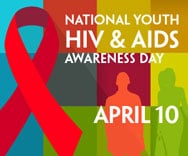 |
| * The "C" in the flu tests pictured above is for "control" |
Friends, family, colleagues and everyone else- FLU SEASON was mild to begin with, but now we are really gearing up. Pictured above are two positive flu tests from one morning this week (two of many). The extra good news is that so far I have not seen anyone with the flu who was vaccinated, though certainly that can happen.
Remember that seasonal influenza causes thousands of hospitalizations and deaths every year in the United States, and the flu vaccine is our best method to prevent or at least reduce the severity of the flu.
This year, we hit a home run on the strains in the vaccine, as we have a very good match between the vaccine and the current strains. Yesterday's
CDC press release notes that the overall effectiveness of this years vaccine is 60%. While that number might not sound super impressive, reducing the total healthcare burden of people needing to seek care for flu symptoms by 60% is huge in our total population! Also, keep in mind that if you receive the vaccine but in your case it is not fully effective so you still get the flu, your symptoms should be less severe, and your infection is likely to resolve more quickly. I'm posting this today, though, not for adamant anti-flu vaccine holdouts, but for the well-intentioned stragglers that simply never got around to getting the vaccine. Please, it's not too late- GO GET VACCINATED!
CDC data shows happily that only two states- Arizona and Oklahoma- are having HIGH levels of flu-like illnesses right now. Texas, along with Arkansas, Connecticut, Florida, Hawaii, Illinois, Maryland, Nevada, New Jersey and New Mexico are close behind with "moderate" levels, which is no surprise with what I am seeing in my patients.
Remember- not all flu looks the same. Fevers can be high or minimal. Headaches, sore throats, muscle aches, cough, runny nose and fatigue are common. Stomach symptoms with nausea, vomiting or diarrhea can occur independently or with the other symptoms.
When should you go to the doctor? If you are MISERABLE- feeling like a truck hit you, rather than a common cold or allergies causing upper respiratory symptoms, then go sooner rather than later, because if you do have the flu, the anti-flu medications are maximally effective when started within 2 days of symptoms beginning.
Does everyone need medication if they have the flu? No. Most otherwise healthy young people can manage without anti-viral medications, but they may certainly benefit from a cough suppressant or decongestant.
Why bother testing for flu? There are several reasons, partly for you, the patient, and partly for public health/your family. If a college student living in close quarters in a dorm has the flu, for example, we would rather they not infect their roommate and classmates. Knowing they have the flu helps us advise them on when to return to class, or perhaps help parents who live nearby to decide to whisk them home for a few days of chicken soup and true rest. Remember, if a flu test is POSITIVE- you've got the flu. If it is NEGATIVE...you still might have the flu. (For more explanation, see
Was My Rapid Flu Test Accurate?)
BOTTOM LINE: Flu season is still here and it is NOT too late to get vaccinated!






